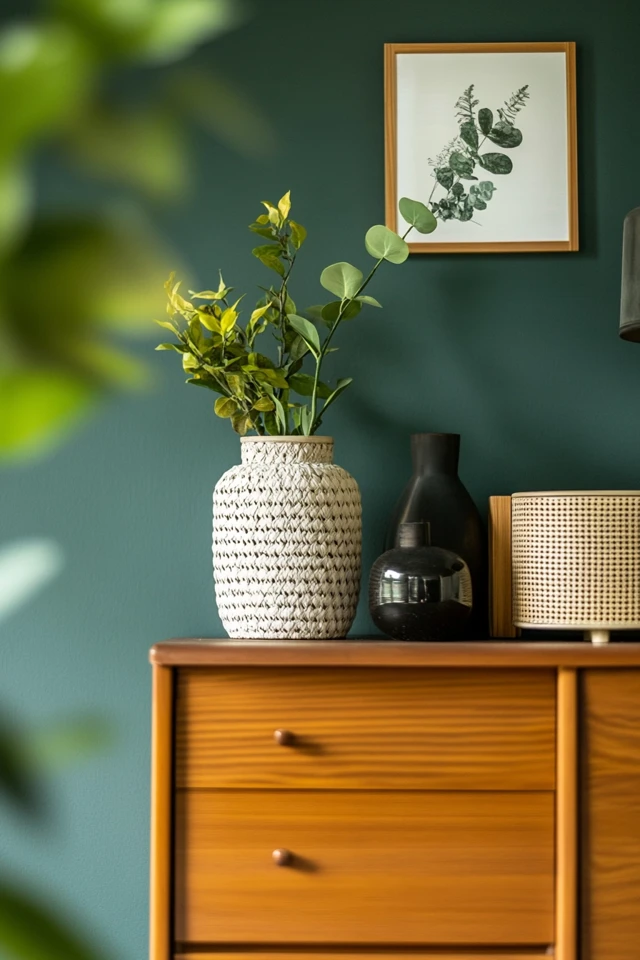Introduction
One of the most iconic aspects of mid-century modern design is its use of rich, natural wood tones. But if you’ve ever tried decorating with wood furniture or accents, you know that mixing multiple wood tones can feel intimidating. When I first started designing my living room, I avoided pairing different wood pieces altogether, opting for a uniform look instead. The result? A room that felt flat and uninspired.
It wasn’t until I embraced the idea of mixing wood tones that my space truly came to life. I started small, layering a teak coffee table with walnut picture frames and a light oak bookshelf. The contrast between the tones added warmth and depth, creating a dynamic and cohesive look.
Mid-century modern interiors thrive on this balance. By mixing wood tones thoughtfully, you can create spaces that feel layered, welcoming, and anything but monotonous. Whether you’re designing a cozy living room, a sleek kitchen, or a retro-inspired bedroom, these creative ideas will help you master the art of mixing wood tones like a pro.
The Perfect Design Element for You
Mixing wood tones is perfect for anyone who wants to achieve a look that feels natural yet intentional. Mid-century modern design is all about organic beauty, and blending different woods reflects this philosophy. It’s a style that feels curated rather than cookie-cutter.
Imagine a dining room with a walnut table, light oak chairs, and a teak sideboard. The variation in tones creates visual interest, making the space feel lively and balanced. Mixing wood tones also allows you to showcase the unique characteristics of each piece, from the deep, rich grains of mahogany to the smooth, honeyed finish of maple.
When done well, this approach can make your interiors feel warm, inviting, and uniquely yours. It’s a perfect way to celebrate the timeless beauty of wood while embracing the mid-century modern ethos of simplicity and elegance.
Why Mixing Wood Tones Works So Well
Blending wood tones is an art, but it’s one that follows some key principles of mid-century modern design:
- Visual Contrast
- Mixing light and dark woods adds depth and dimension to a room. A dark walnut coffee table against a light oak floor creates a striking contrast that draws the eye.
- Organic Harmony
- Natural wood tones share earthy undertones, which makes them inherently compatible. This creates a sense of cohesion even when combining different shades.
- Textural Interest
- Different woods often have unique grain patterns and finishes. Combining them adds texture and character to your space.
- Timeless Appeal
- Wood is a material that never goes out of style. Mixing tones ensures that your space feels dynamic and adaptable over time.
- Mid-Century Vibes
- The mid-century era celebrated a mix of materials and finishes. By blending wood tones, you’re staying true to the spirit of the design movement.
These principles make mixing wood tones an effective way to create spaces that feel layered and balanced, all while celebrating the natural beauty of mid-century modern design.
10 Creative Ideas for Mixing Wood Tones
- Start with a Dominant Tone
- Choose one wood tone to act as the anchor in your space, such as a walnut dining table or a teak bed frame. Use this tone as the foundation, and layer in other woods sparingly.
- Pair Light and Dark Tones
- Create contrast by mixing light woods like maple or ash with darker tones like mahogany or walnut. For example, a light oak floor can beautifully offset a dark rosewood credenza.
- Incorporate Wood Accents
- Use smaller wood accents, such as picture frames, bowls, or lamp bases, to introduce additional tones without overwhelming the space.
- Layer Textures
- Combine smooth, polished woods with rougher, more rustic finishes. This adds depth and ensures that the different tones feel cohesive rather than clashing.
- Use a Neutral Base
- Anchor your design with neutral elements like white walls or soft rugs. These create a backdrop that ties the wood tones together and prevents the room from feeling too busy.
- Repeat Tones for Cohesion
- Use each wood tone in at least two places in the room. For instance, pair a dark walnut side table with matching picture frames, or echo the light oak of a chair with a coordinating bookshelf.
- Introduce Colorful Accents
- Add pops of mid-century colors like mustard yellow, teal, or olive green to break up the wood tones and add personality to the space.
- Let Flooring Guide You
- Use your flooring as a starting point. If you have dark wood floors, incorporate lighter wood furniture to create contrast and balance.
- Blend Finishes
- Mix matte and glossy finishes to keep the look dynamic. A matte walnut coffee table can complement a glossy teak sideboard beautifully.
- Add Metallics
- Incorporate brass, copper, or black metal accents to act as a bridge between different wood tones. A brass lamp or copper bowl can add cohesion and a touch of mid-century elegance.
Picture Gallery
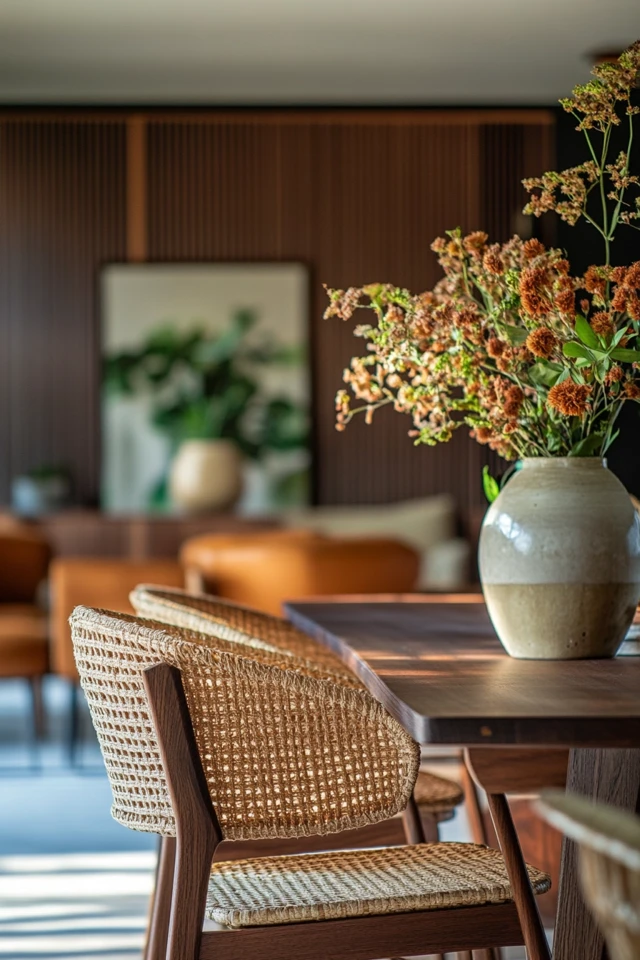
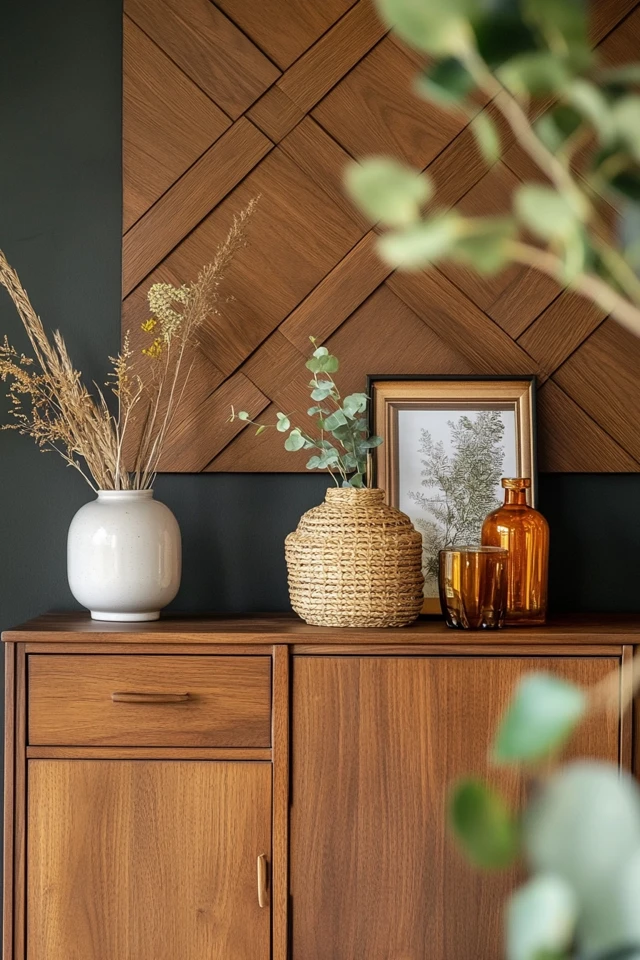
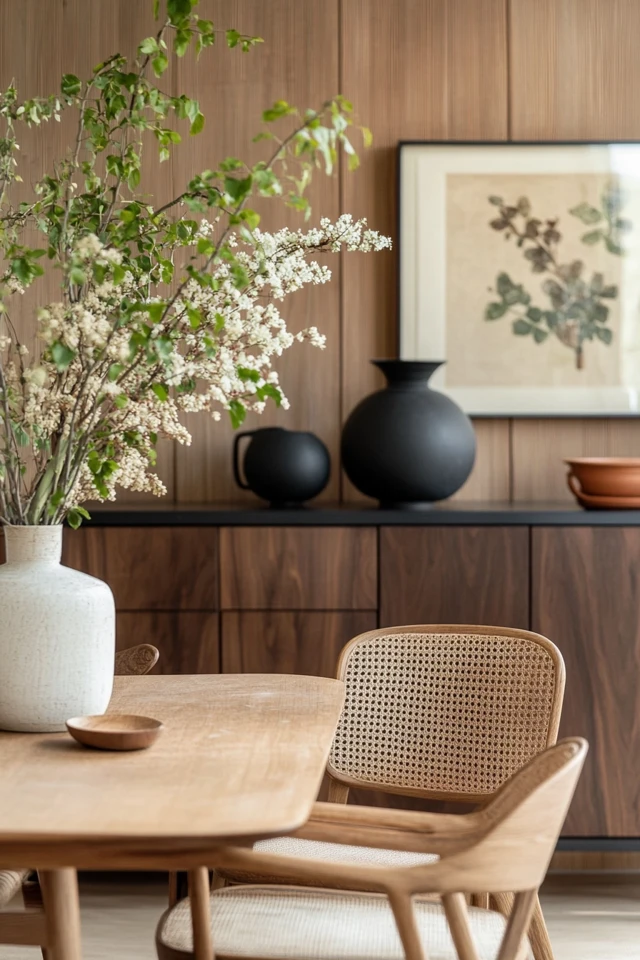
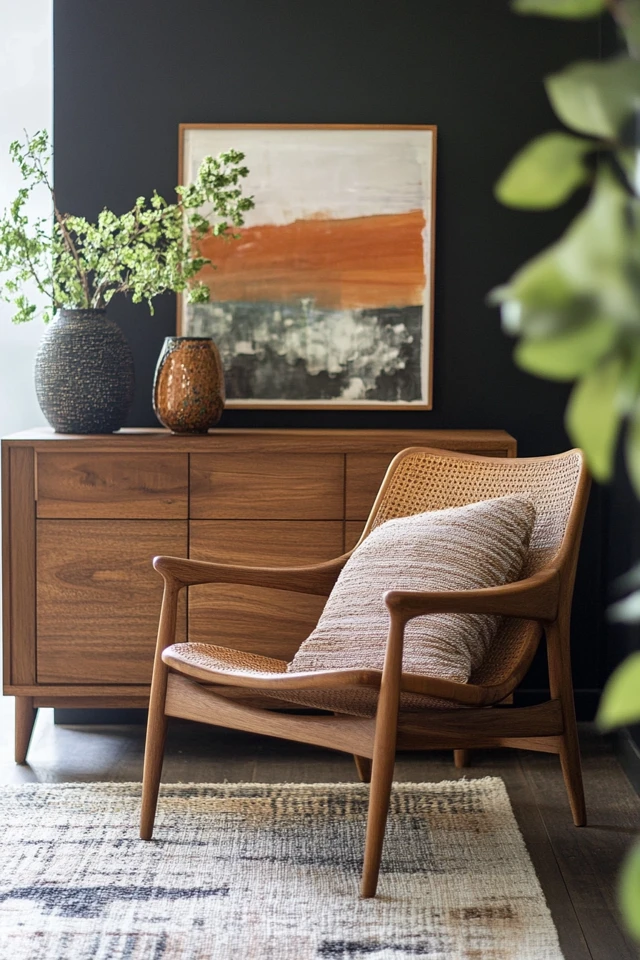
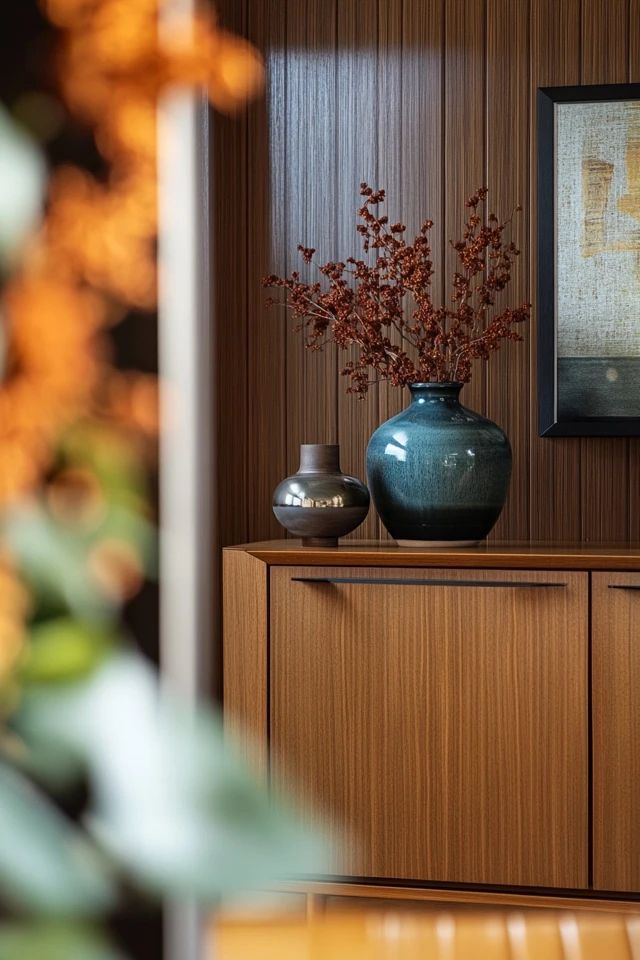
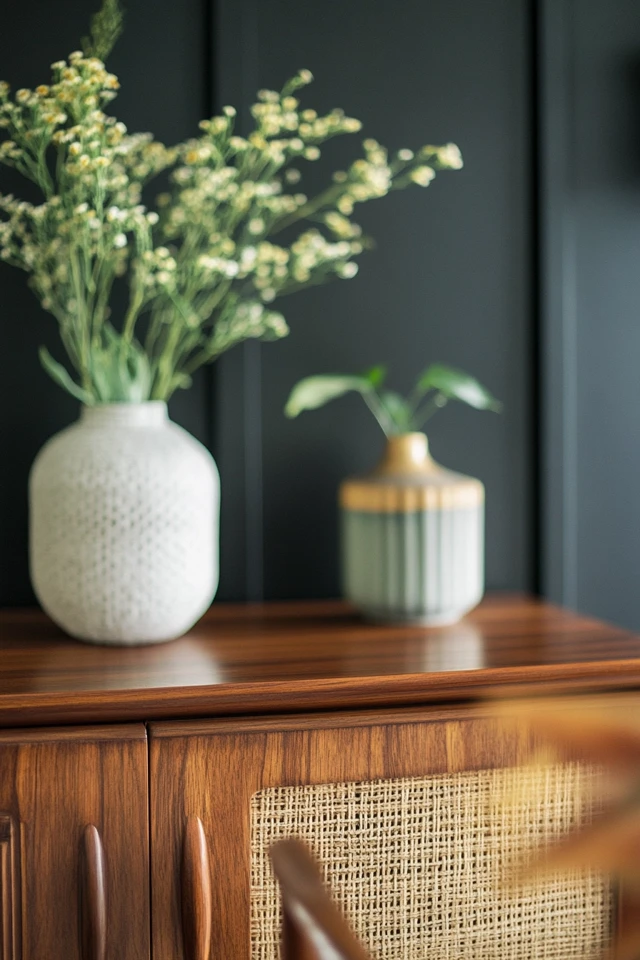
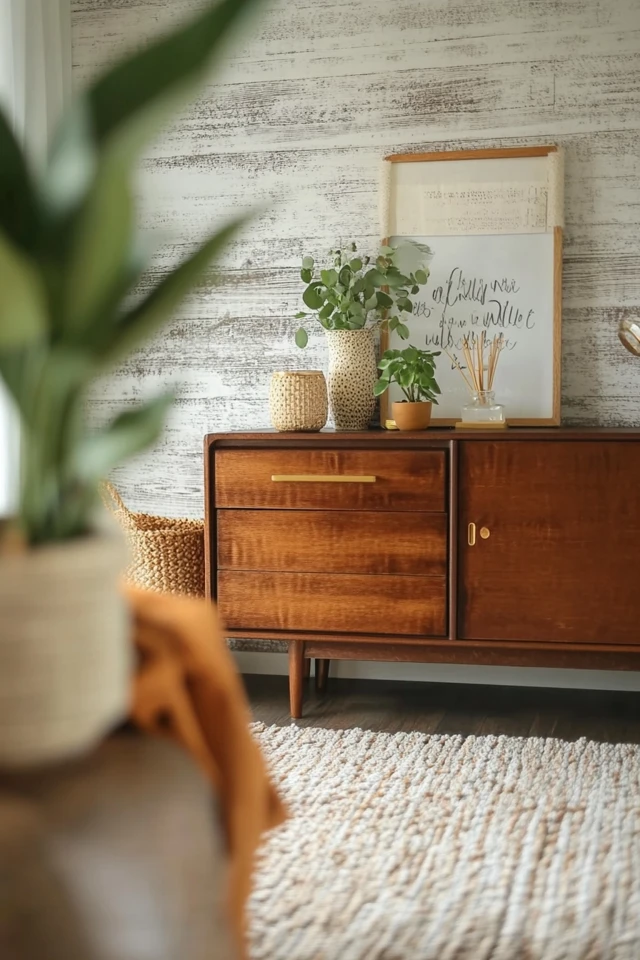
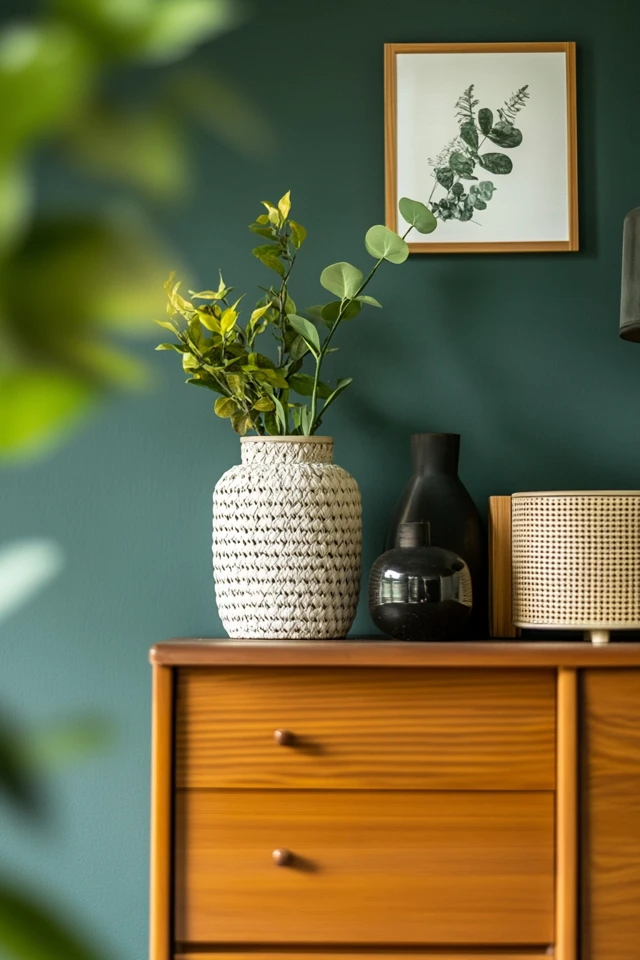
FAQ Section
- Is it okay to mix more than two wood tones?
- Yes, but stick to 2–3 tones to avoid visual chaos. Use one dominant tone and balance the others through accents and smaller pieces.
- What’s the best way to tie different wood tones together?
- Use repetition and contrast. Echo each tone in multiple places, and balance light and dark woods for harmony.
- Can I mix wood tones with painted furniture?
- Absolutely! Painted pieces in neutral or mid-century colors like teal or mustard can act as a buffer between different wood tones.
- What if my wood tones clash?
- Use neutral elements or metallic accents to create a buffer. Rugs, throws, and cushions can also help balance clashing tones.
- How can I mix wood tones in a small space?
- Stick to lighter tones for larger pieces to keep the space feeling open, and add contrast with darker wood accents.
Variations
- Minimalist Look: Pair two wood tones — one light and one dark — for a clean, streamlined aesthetic.
- Bold and Eclectic: Mix three or more wood tones, incorporating colorful accents and patterned textiles for a playful vibe.
- Scandinavian Fusion: Blend light, bleached woods like birch with soft gray or whitewashed finishes for a Nordic-inspired take on mid-century modern.
- Rustic Touch: Combine mid-century furniture with reclaimed or rough-hewn wood for a cozy, lived-in feel.
How to Showcase It
- Living Rooms: Layer wood tones with a walnut coffee table, a light oak media console, and teak picture frames for a balanced look.
- Dining Rooms: Pair a dark wood dining table with light wood chairs, and echo both tones with a sideboard or bar cart.
- Bedrooms: Mix a teak bed frame with light birch nightstands and a walnut dresser for a layered, cohesive look.
- Home Offices: Combine a sleek walnut desk with a light wood bookshelf and dark wood accents like a chair or lamp base.
Occasions to Feature It
- Housewarming Parties: Show off your layered wood tones as part of a well-curated, inviting space.
- Seasonal Refreshes: Add new wood-toned accents like trays, bowls, or candle holders for a quick seasonal update.
- Everyday Living: Create a warm, layered atmosphere that feels both functional and stylish for day-to-day life.
- Design Showcases: Impress friends and family with your ability to mix and match wood tones like a pro.
Conclusion
Mixing wood tones is a creative and rewarding way to bring depth, warmth, and personality to your mid-century modern interiors. By balancing contrast and cohesion, you can achieve a layered, dynamic look that feels intentional and timeless.
Whether you’re decorating a single room or an entire home, the key is to experiment with different tones, textures, and finishes. Don’t be afraid to mix and match — mid-century modern design is all about celebrating natural beauty and individuality. When your space finally comes together, you’ll see that blending wood tones isn’t just an art — it’s a statement.

